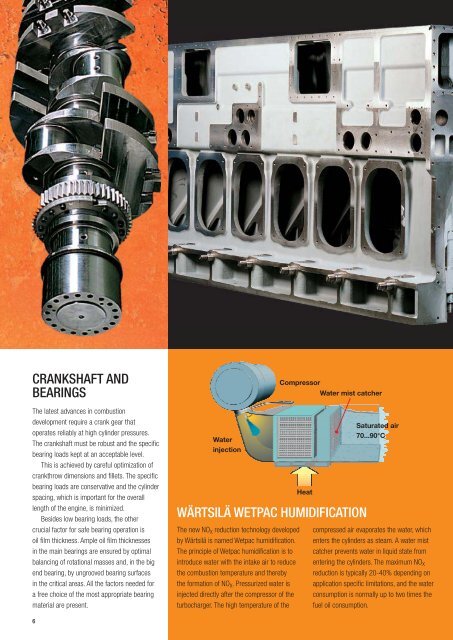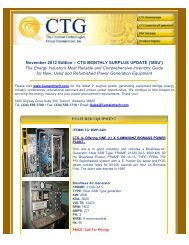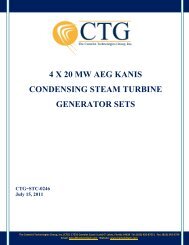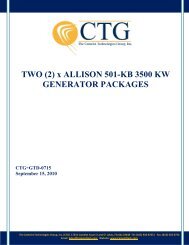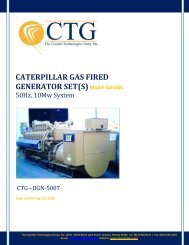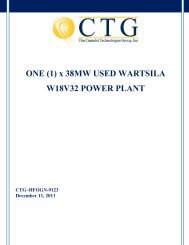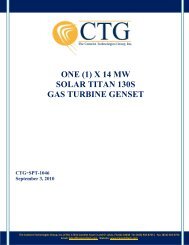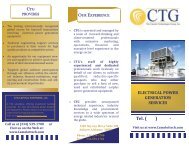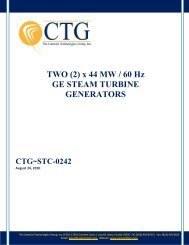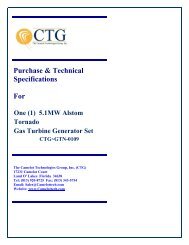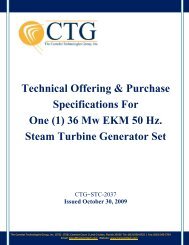TECHNOLOGY REVIEW - Camelot Technologies Group
TECHNOLOGY REVIEW - Camelot Technologies Group
TECHNOLOGY REVIEW - Camelot Technologies Group
You also want an ePaper? Increase the reach of your titles
YUMPU automatically turns print PDFs into web optimized ePapers that Google loves.
CRANKSHAFT AND<br />
BEARINGS<br />
The latest advances in combustion<br />
development require a crank gear that<br />
operates reliably at high cylinder pressures.<br />
The crankshaft must be robust and the specifi c<br />
bearing loads kept at an acceptable level.<br />
This is achieved by careful optimization of<br />
crankthrow dimensions and fi llets. The specifi c<br />
bearing loads are conservative and the cylinder<br />
spacing, which is important for the overall<br />
length of the engine, is minimized.<br />
Besides low bearing loads, the other<br />
crucial factor for safe bearing operation is<br />
oil fi lm thickness. Ample oil fi lm thicknesses<br />
in the main bearings are ensured by optimal<br />
balancing of rotational masses and, in the big<br />
end bearing, by ungrooved bearing surfaces<br />
in the critical areas. All the factors needed for<br />
a free choice of the most appropriate bearing<br />
material are present.<br />
Water<br />
injection<br />
Compressor<br />
Heat<br />
Water mist catcher<br />
WÄRTSILÄ WETPAC HUMIDIFICATION<br />
The new NO X reduction technology developed<br />
by Wärtsilä is named Wetpac humidifi cation.<br />
The principle of Wetpac humidifi cation is to<br />
introduce water with the intake air to reduce<br />
the combustion temperature and thereby<br />
the formation of NO X . Pressurized water is<br />
injected directly after the compressor of the<br />
turbocharger. The high temperature of the<br />
Saturated air<br />
70...90°C<br />
compressed air evaporates the water, which<br />
enters the cylinders as steam. A water mist<br />
catcher prevents water in liquid state from<br />
entering the cylinders. The maximum NO X<br />
reduction is typically 20-40% depending on<br />
application specifi c limitations, and the water<br />
consumption is normally up to two times the<br />
fuel oil consumption.<br />
6


